Original War
Preview - hands-on look at the Paleolithic real-time strategy game with a difference
In this age of glorious 3D accelerated real-time strategy games with graphics card frying pyrotechnics and full 360 degree spinny-rotatey™ cameras, "Original War" is something of a throwback to an earlier era. Rendered in the traditional two dimensional isometric fashion of the days of yore, although admittedly at an eye-pleasing 1024x768 resolution, it certainly isn't going to win any prizes for technical achievement.
But graphics aren't everything, and thankfully Original War has a few tricks up its sleeve when it comes to gameplay, making a refreshing change from the retro-almost-to-a-fault "Command & Conquer" series. We took a hands-on look at a beta version of the game to find out more...
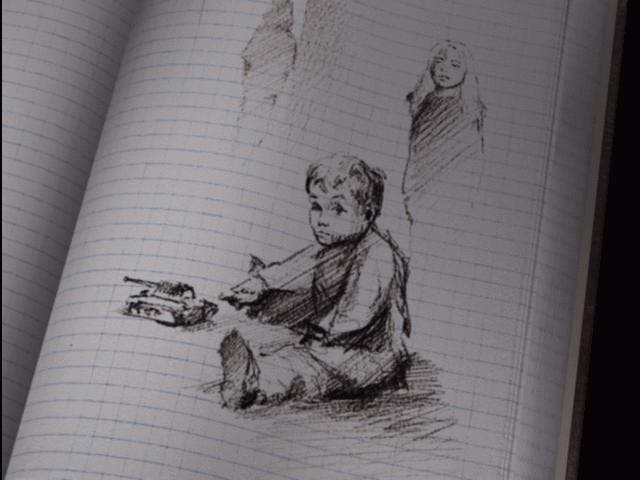
The Time Machine
At the heart of Original War's story is a touching saga of man finds woman, man loses woman, man steps into time machine and travels two million years into the past, man gets woman back, and they all live happily ever after .. in a cave.
The game starts with an American explorer in Siberia discovering what turns out to be a fully functioning time machine, which is promptly taken to Area 51 for study. The scientists soon find that the machine uses an unknown kind of fuel which is the answer to the world's energy problems, but unfortunately the only known source is deep in Soviet Russia, near the site where the time machine was discovered. The American solution to this problem is to send a team back in time using the machine, at which point they can mine the fuel unopposed and transport it to Alaska, allowing the Americans to dig it up back in the present day.
Of course, things aren't quite that simple. For a start, the time machine can only send you about two million years into the past, and there is no way of returning to the present once your mission is complete. You play the role of John MacMillan, an American soldier who volunteers for the one way trip to the stone age, only to meet the love of his life the night before the mission departs.
As if that wasn't bad enough, when you reach the stone age it soon becomes obvious that something has gone horribly wrong. Not only are your comrades and your supplies arriving seemingly at random, scattered over several square miles and a few years, but the Russians have somehow got there before you. Your first task then is simply to stay alive, avoid the Russian patrols, and make your way to the Alpha Base which the Americans have set up in the area.
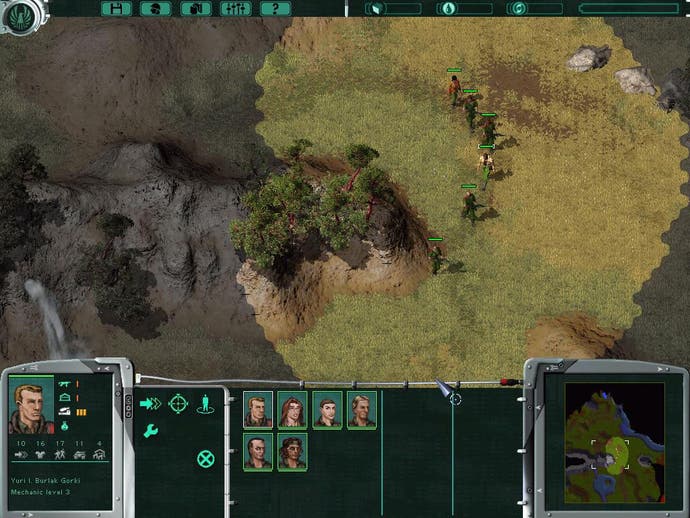
Rhythm And Stealth
Which brings us to the first of Original War's innovations. While other real-time strategy games tend to be all about resource gathering, base building and unit construction, in Original War the emphasis is on stealthy tactics rather than tank rushes.
The game is built to encourage a more intelligent and hands-on approach to command, allowing you to pause the action at any time and give your units orders. As with any good real-time strategy game, you can set up waypoints and patrol routes with a few simple mouse clicks, allowing you to guide your men around enemy strongholds. Simply charging in with guns blazing is liable to lead to rapid death in many of the missions, and when you are out-gunned by the enemy the only solution is to out-think them, attacking any weakpoints and taking advantage of the terrain.
Units can crawl along on the ground, making them less visible, and you can hide them amongst the trees and long grass which covers large portions of the maps. In fact, the game features an entire "grass engine", which does far more than simply allow you to see your troops slithering along on their bellies, half-hidden by the foliage. As in real life, the grass is trampled as people walk, crawl or drive through it, leaving visible tracks which can then be followed (or simply avoided) by wily opponents. Eventually the grass is killed completely, leaving dirt roads across the meadows where people and vehicles regularly pass through them.
Hills are equally useful, providing a vantage point from which your troops can see (and shoot) further. Climbing uphill also slows down enemy units, and some slopes are completely impassable, making such hills excellent defensive positions. And while Original War is far from the first game in which terrain elevation influences combat, it does seem to have a more noticeable effect on the way you approach the game here.
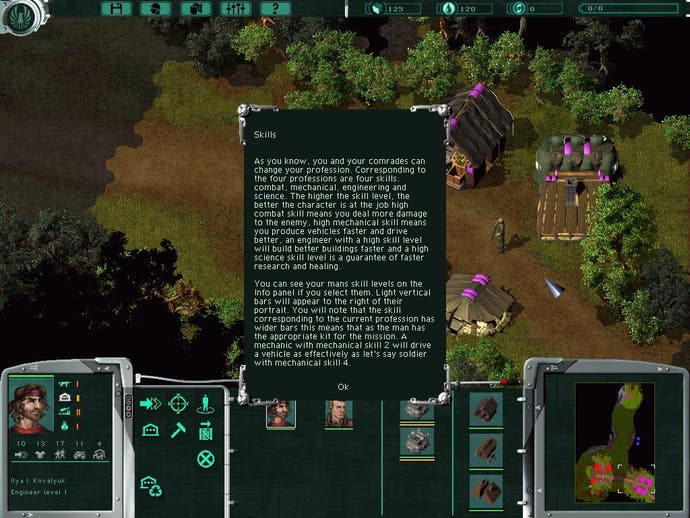
In Character
Partly this is because you have to be far more careful with your units in Original War. You generally have no more than a dozen soldiers under your command, each with their own individual names, faces and characteristics, making the war far more personal than in your average real-time strategy game, dominated as they are by faceless legions of constructed units.
Although later in the game you can tame the local apemen and use their help in combat and construction, the core of your army is made up of the men and women who volunteered to be transported into the past, giving you a limited supply of manpower, and a selection of characters who you will come to know. Not only that, but your troops gain experience throughout the game, and have four basic skills (combat, engineering, mechanical and scientific) which will gradually improve as they carry out various activities.
These skills are matched by the four professions which your troops can take on. Soldiers are obviously best at combat, while engineers gather resources and construct new buildings; mechanics are proficient at building, driving and repairing vehicles, and scientists can research new technologies in a science lab, heal injured personnel, and (later in the game) tame apemen. Your army is versatile though, and by moving characters into the appropriate building you can change their profession in an instant. Balancing the skills of your men becomes an important part of the game, especially when your human resources are the scarcest of all.
The skill system adds something of an RPG element to the game, with your men being carried over from one mission to the next in single player campaigns. Keeping as many of your troops alive as possible while they gain experience is the key to eventually winning the war, as troops with high skill ratings can research more efficiently, construct buildings more rapidly, drive their vehicles faster, and cause more damage in combat.
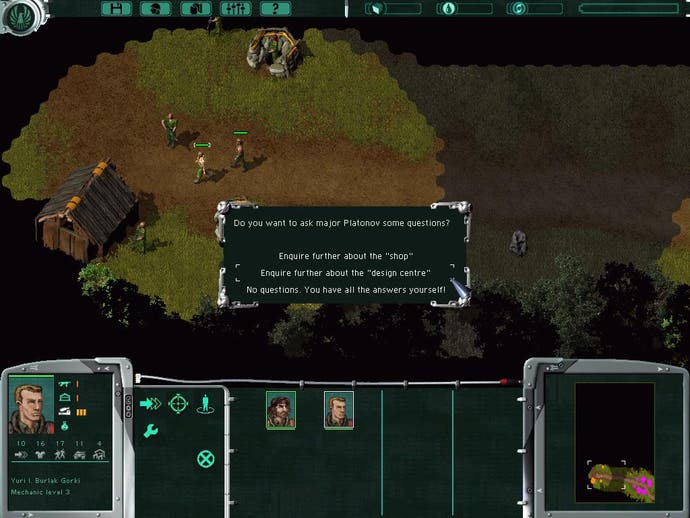
Mission Drive
The missions themselves vary from your traditional "build a base and destroy the enemy" style objectives that have been used in real-time strategy games since the dawn of time, to sneaking, scouting, researching and ape-hunting missions.
Sometimes your objectives will change mid-mission, and in some cases you can even ignore your orders and use your own initiative to complete additional objectives. The game occasionally throws up choices which you will have to make, such as whether to abandon a reconnaissance mission to save a comrade who is stranded behind enemy lines. It makes the game a bit more rigid, and gives you more incentive to play through a campaign again to see what would have happened if you had made a different choice at a key moment.
Your performance in missions sometimes effects what happens next in the game, and although it is too stubby to call it a true brancing mission structure, it is at least a change from the usual linear progression of black and white win or lose situations. And completing optional secondary objectives can also bring additional prestige and medals for you, as well as more experience for your troops, and a whole range of other benefits.
The final game should feature three single player campaigns, although only two were in place in the beta version we played. The main campaign follows the Americans as they try to mine the fuel and take it to Alaska, while the Soviets try to stop them and hunt down the remaining American soldiers, who are running around in their motherland two million years before the glorious revolution. The third campaign, which we haven't seen yet, is played as the Arabs, who gatecrash the party in an attempt to destroy the fuel source and prevent either side from using it, hence perpetuating our reliance on their environmentally unfriendly oil.
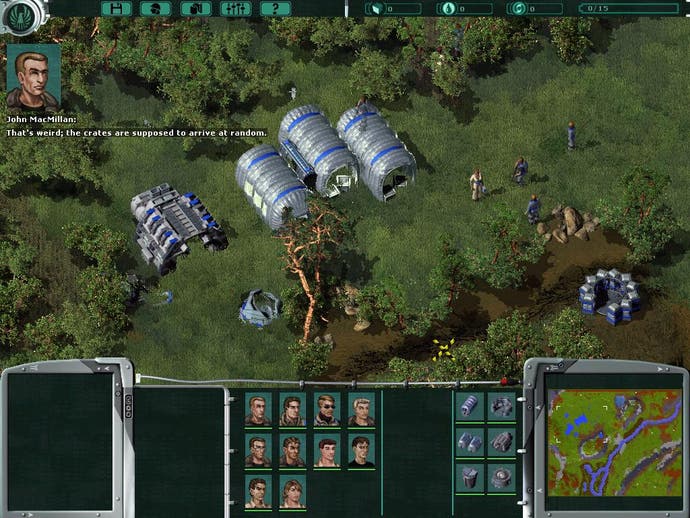
Conclusion
Although the graphics aren't particularly groundbreaking in the year 2000, the gameplay of Original War does make it stand out from the flood of other real-time strategy games which have been unleashed over the last five years.
With stealth and role-playing elements added into the mix, some of the most impressive grass we've seen in a strategy game to date, and three seperate armies to control as they rampage through paleolithic Russia, Original War should be well worth a closer. The latest information from publisher Virgin Interactive is that we can expect it on shelves for Friday 1st December 2000. Just in time for Christmas then...
-
Original War screenshots

